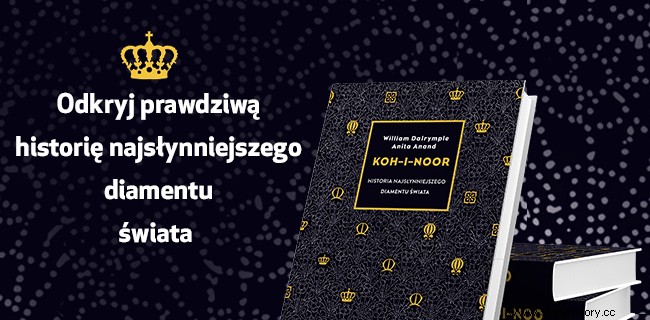A diamond is a woman's best friend? Not at all. Only a few dozen years ago, no one knew this "eternal" truth, and the ladies did not associate shiny stones with an engagement.
People have always valued diamonds. As early as in the first century AD, Pliny the Elder wrote of them that they had "the greatest value, not only among precious stones, but of all human possessions". In India, which was the only source of these gems until the 18th century, it was believed that they gave their owners extraordinary power to deter “snakes, tigers and thieves”. About Koh-i-noor, the most famous diamond in history, it was even said that whoever had it would gain power over the world.
However, as is often the case with objects that symbolize power and status, sparkling jewels were not originally associated with women. "Some Indian people would despise the idea of a diamond as a girl's best friend," admits the gemstone historian Jack Ogden. Garudapurana, one of the holy books of Hinduism, openly forbade their wearing:"Diamonds are a forbidden item in women's clothing as they possess mystical properties that make women sterile and unhappy."
Women were rather recommended red rubies, symbolizing fertility. Diamonds do sometimes appear in a marital context, but for example… as a pledge. This was the case with the first documented holder of an "engagement" diamond ring, Maria of Burgundy.
The gem sealed her relationship with Maksymilian Habsburg, but it was the future groom who received it - as a guarantor of the "sincerity of intentions" of the candidate for a wife . So how did it come about that many girls today consider this trinket an integral part of their engagement?
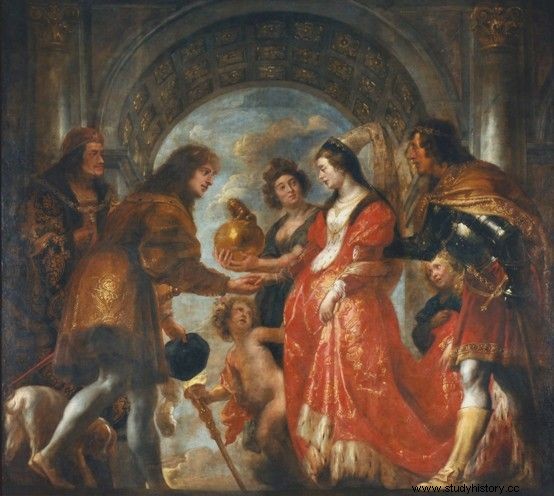
The diamond ring appeared at the engagement of Maria of Burgundy and Maksymilian Habsburg ... but it was the groom who got it!
"There is something repulsive about this stone"
Undoubtedly, the turning point for the "eternal" stones was the 19th century. Firstly, after the discovery of deposits in Africa (the first diamonds were found there in the 1950s), their supply increased drastically. Secondly, these jewels, previously rather unspectacular and disappointing in appearance, suddenly gained a new "face". By what miracle? In the book "Koh-i-noor. The history of the most famous diamond in the world ” William Dalrymple and Anita Anand explain it:
This was due to the invention of a symmetrical and multi-faceted brilliant cut that fully released the "fire" contained in diamond, which in turn led to the emergence of a fashion for diamond engagement rings in the middle class of Europe and America (...).
Suddenly, it turned out that diamonds are a strong competition for the more popular sapphires, opals, rubies or even ... pearls. It was clearly visible on the example of Koh-i-noor. Before it got a new polish, journalists wrote that "there is something repulsive about this stone, because the more you light it, the less prone it is to show its magnificence." He stole the hearts of the audience only after the "change" that took place in 1852.
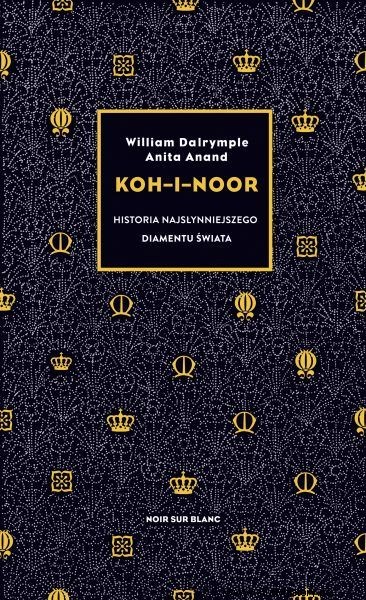
The emergence of a new source of diamonds, which triggered a real "fever" in the last decades of the nineteenth century, had its downside as well. There were a lot of stones on the market, some of poor quality, and their price was falling alarmingly. Moreover, the nineteenth-century fashion for colorless jewels began to fade away, and by the 1930s there was no trace of it left. As the journalist Edward Epstein researching this topic wrote:
In Europe, where diamond prices collapsed during the Great Depression, there was little hope of restoring public confidence in diamonds. In Germany, Austria, Italy and Spain, the idea of donating a diamond ring to commemorate an engagement never caught on. In England and France, diamonds were still seen as jewels for aristocrats rather than for the masses.
It was similar in America, where the problems with the quality of trinkets were even greater than on the Old Continent. No wonder the situation has alerted businessmen investing in South African mines. They realized that only by maintaining the fiction that diamonds are limited and that diamonds are of extraordinary value can they defend their investments and raise the price of diamonds. - Epstein reports.
"Diamonds are forever"
But how can this be done? The first step, which was taken as early as 1888, was to control the amount of diamonds sold for sale. This was done by De Beers Consolidated Mines, Ltd., founded by Cecil Rhodes (based, inter alia, on the capital of the Rothschilds), which quickly gained an almost monopoly on trade in precious stones. This allowed to keep their prices in check, but unfortunately did not affect the number of people willing to buy. The demand for diamonds continued to decline - in America between 1919 and 1938 their sales were halved!
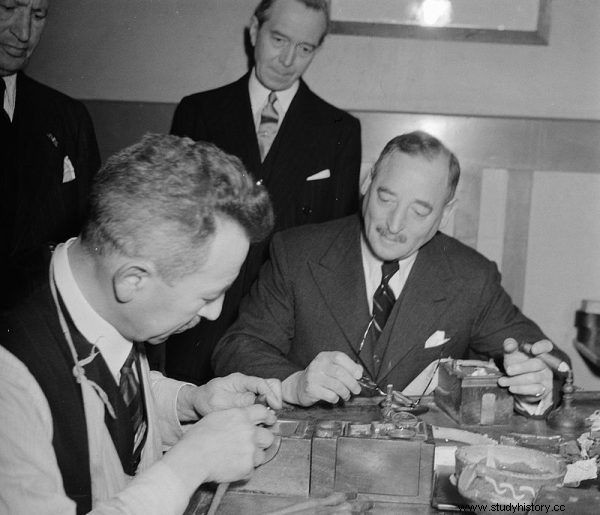
Ernest Oppenheimer and his son Harry - as well as an advertising agency they hired - to create the "diamond trend" was the brainchild of Ernest Oppenheimer and his son Harry.
At that time, De Beers was headed by Ernest Oppenheimer. In September 1938, he made a brilliant move - he sent his son, Harry, to N.W. Ayer, one of the best advertising agencies in the USA. It was in the New World that he intended to strike first, seeing the dark clouds of the war storm gathering over Europe. It was a bull's eye. Soon one of the most effective promotional campaigns in history was launched. N.W. Ayer decided to launch a new trend for diamonds and associate them with the idea of romantic love.
This image was smuggled into the public consciousness, among other things, thanks to the gift of diamonds to movie stars and encouraging them to use them as a symbol of indestructible love. Articles in which the role of jewels was exaggerated were also distributed to newspapers. Pictures of American idols were published, discreetly marked with shiny rings on their fingers. And the slogan "diamonds are forever" has started to make a staggering career.
Already the first years of advertising activities gave spectacular results. By 1941, diamond sales in America had increased by 55 percent. The trend has turned for good, still being strengthened thanks to Ayer's further deliberate moves. There was even a series of special lectures on these precious stones! They were delivered in ... high schools all over the country. Trendsetters have already spoken openly on the radio about the new fashion. However, marketers did not intend to stop there. As their 1947 report said:
We spread the word about diamonds worn by stars on screen and on stage, by wives and daughters of political leaders, by any woman who is able to get the shopkeeper's wife and sweetheart a mechanic to say "I wish I had what she had!"
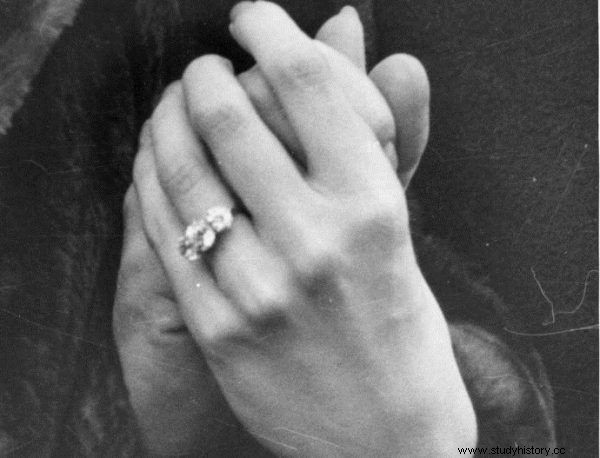
Part of the campaign was to show photos of engagement rings from famous celebrities. The photo shows Princess Margaret's ring.
As we know, the women were convinced. And De Beers in 40 years (between 1939 and 1979) increased the revenue from the sale of diamonds from 23 million to 2.1 billion dollars a year. At the end of this period, the annual advertising budget was $ 10 million.
Meanwhile, the "eternal" jewels also began to conquer the rest of the world markets. With similar success:while in 1967 only 5 percent of Japanese women got engaged "in diamond", in 1981 already a precious stone was received by 60 percent of women who decided to say "yes". There is no doubt, however, that De Beers is the best in this situation.
Bibliography:
- William Dalrymple, Anita Anand, Koh-i-noor. The story of the world's most famous diamond , Noir Sur Blanc 2019.
- Jack Ogden, An Early History of the King of Gems , Yale University Press 2018.
- Uri Friedman, How an Ad Campaign Invented the Diamond Engagement Ring , "The Atlantic" 2/13/2015.
- Todd Cleveland, Stones of Contention. A History of Africa's Diamonds, Ohio University Press 2014.
- Ian Smillie, Diamonds , Polityka 2014.
- Edward Jay Epstein , Have You Ever Tried to Sell A Diamond? , "The Atlantic" 02/1982.
Learn the fascinating history of the legendary diamond:
